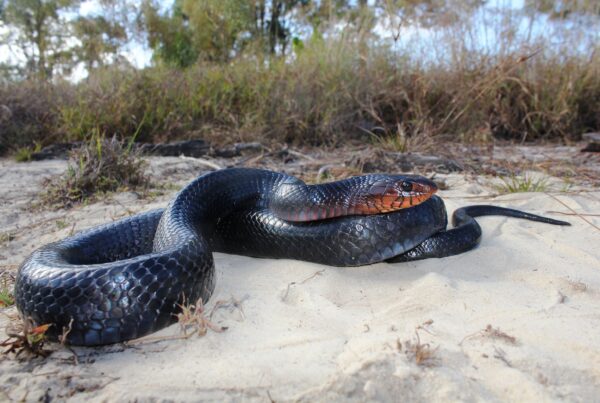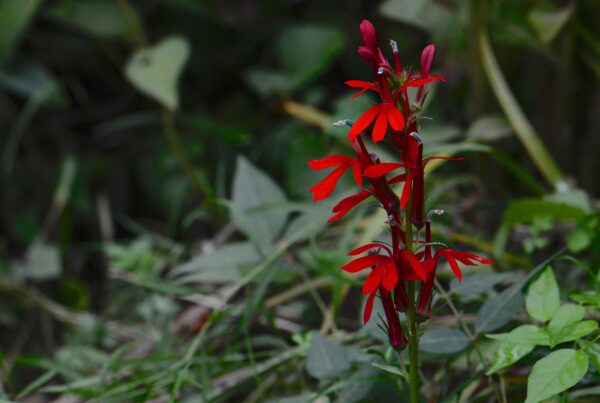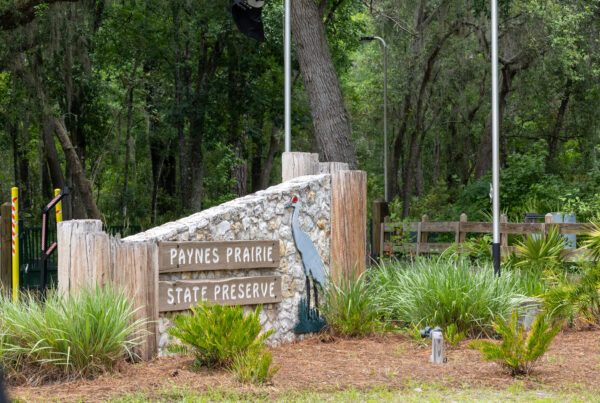The Florida scrub-jay (Aphelocoma coerulescens) is a true Florida native, found nowhere else in the world. This striking bird with vibrant blue feathers and a grayish back is more than just a pretty face—it’s an important indicator of the health of Florida’s unique scrub ecosystems.

Florida scrub-jay by Matt Cuda
Unlike other jays, it lacks a crest, giving it a sleek and unique appearance. What makes this species truly special is its limited range—it’s found only in Florida, inhabiting the state’s rare and sandy scrub ecosystems. This exclusive range and reliance on these diminishing habitats make the Florida scrub-jay both a state treasure and a conservation priority.
A Bird with a Family Plan
One of the most fascinating traits of the Florida scrub-jay is its cooperative breeding behavior. Family units stick together, with offspring often staying to help raise younger siblings. This teamwork not only strengthens their chances of survival but also creates a unique social bond within the species. Some individuals take on the critical role of “sentinels,” perching in high spots to keep watch for predators and sounding the alarm to protect the group. This division of responsibilities showcases their remarkable social structure and adaptability.

Florida scrub-jay by Daynjer In Focus
Habitat Specialists
Florida scrub-jays are true specialists, thriving only in the unique scrub habitats of Florida. These areas are characterized by sandy soils and dense, low-growing oaks such as sand live oak, myrtle oak, and Chapman’s oak, which provide food and cover. However, these habitats are increasingly at risk. Urban development has consumed large portions of scrub land, fragmenting populations and isolating them from each other. Additionally, fire suppression has disrupted the natural cycle of periodic wildfires that these ecosystems depend on to thrive. Without fire, scrub habitats become overgrown with taller vegetation, shading out the low oaks that scrub-jays rely on for food and nesting. The loss of these specialized habitats underscores the importance of land conservation and habitat management to ensure the survival of this iconic species.

Florida scrub habitat by FDEP
How You Can Help
Protecting scrub habitat is essential for the survival of the Florida scrub-jay. Learn more about the Florida Wildlife Federation’s land conservation efforts and discover how you can advocate for the preservation of these critical ecosystems.
If you live near suitable habitat, consider planting scrub oaks and other native plants that provide food and shelter for Florida scrub-jays. These low-growing oaks, such as myrtle oak and sand live oak, produce acorns that are a vital food source for scrub-jays, especially during the winter months. Native shrubs and groundcover can also create the open, sandy spaces these birds need for foraging and nesting. By landscaping with native plants, you can help recreate the conditions of their natural habitat, offering a lifeline to this species while supporting overall biodiversity in your area.
Visit a Scrub-Jay Habitat!
Experience the Florida scrub–jay in its natural environment by visiting protected habitats where these birds thrive. January is a great time to spot them as they’re active in family groups, maintaining territories in open scrub habitats. Cooler weather and increased visibility before breeding season make it ideal for birdwatching.
Oscar Scherer State Park in Sarasota County offers excellent opportunities to observe them up close, with guided tours and marked trails through prime scrub habitat. Merritt Island National Wildlife Refuge near Cape Canaveral is another great spot, where you can explore expansive scrub ecosystems while enjoying a variety of other wildlife. Additionally, Jonathan Dickinson State Park in Martin County provides a unique setting to observe Scrub-Jays amidst beautiful coastal scrub landscapes. Visiting these locations not only offers a chance to see these charismatic birds but also supports the conservation of the habitats they rely on.

To spot Florida Scrub-Jays, visit sandy, open scrub habitats (like the ones mentioned above), especially in the early morning when they’re most active and vocal. Listen for their distinctive “schreep” calls and watch for movement as they perch on shrubs or forage on the ground. These bold and curious birds may even approach if you stay still and patient. Bring binoculars for a closer view and wear neutral colors to blend into their environment while respecting their fragile habitat.
By learning about and protecting the Florida scrub-jay, you’re helping preserve a piece of what makes Florida unique. Together, we can ensure that future generations get to enjoy the sight of these remarkable birds.






Thanks for the newsletter and great information. On the scrub jay article, you failed to mention that the Ocala National Forest is a great place to encounter and see the scrub jay. The Ocala has the largest population in the State of Florida. Currently, estimated populations are 80 to 90 clans. This relates to approximately 3500 birds. One can travel on the Florida National Scenic Byway and most likely the scrub jay perched on a tree snag. Please mention this in future articles. Thanks
Another great spot! Thank you for adding that to the list!